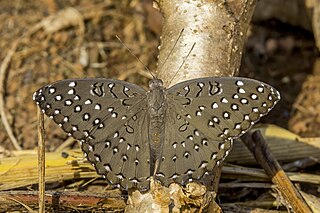
Hamanumida daedalus, the guineafowl butterfly, is a butterfly of the family Nymphalidae and only member of the genus Hamanumida.

Coeliades is a genus of large skipper butterflies found in Subsaharan Africa. They are commonly known as policemen.
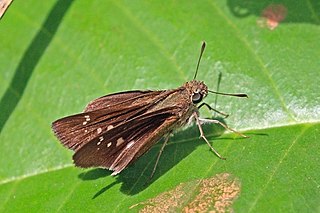
Borbo borbonica, the borbo skipper, Zeller's skipper or olive haired swift, is a butterfly of the family Hesperiidae. It is found along the southern coasts of the Mediterranean Sea including SW Spain, but mainly in Syria, Arabia, Africa, Mauritius and Réunion.
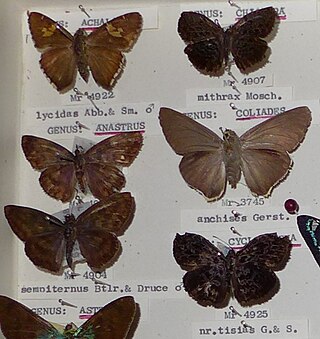
Coeliades anchises, the one-pip policeman, is a butterfly of the family Hesperiidae. It is found in eastern KwaZulu-Natal, Zimbabwe, Tanzania, from Mozambique to Somalia, and in Ethiopia.
Coeliades libeon, the spotless policeman, is a butterfly of the family Hesperiidae. The species was first described by Herbert Druce in 1875. It is found in tropical Africa, Mozambique, Zimbabwe and is an uncommon migrant to South Africa.
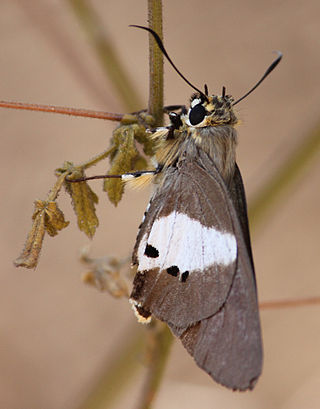
Coeliades pisistratus, the two-pip policeman, is a butterfly of the family Hesperiidae that occurs commonly in much of sub-Saharan Africa.
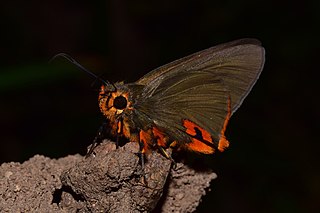
Coeliades keithloa, the red-tab policeman, is a butterfly of the family Hesperiidae. It is found from Ethiopia south to South Africa.
Coeliades lorenzo, the Lorenzo red-tab policeman, is a butterfly of the family Hesperiidae. It is found in South Africa in the Maputaland forests of northern KwaZulu-Natal, and northwards into Mozambique.

Parosmodes morantii, the Morant's skipper or Morant's orange, is a butterfly of the family Hesperiidae. It is found in KwaZulu-Natal, Eswatini, Mozambique, Botswana, Zimbabwe and from western Kenya to Ghana.
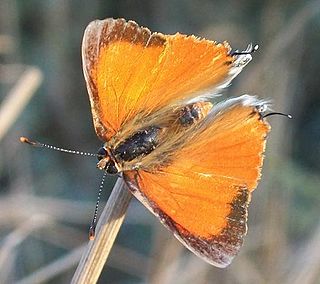
Deudorix dinochares, the apricot playboy, is a butterfly of the family Lycaenidae. It is found in South Africa, Madagascar, Zimbabwe, eastern Africa and south-west Arabia. In South Africa it is found from northern KwaZulu-Natal to Eswatini, Mpumalanga, Limpopo, North West and Gauteng.

Deudorix antalus, the brown playboy, is a butterfly of the family Lycaenidae. It is found in Africa and south-west Arabia.

Anthene liodes, the liodes hairtail, is a butterfly of the family Lycaenidae. It is found from Sierra Leone to Kenya, then to Malawi, Zimbabwe and Angola. It is rarely found in South Africa found from KwaZulu-Natal to Eswatini, Mpumalanga and the Limpopo Province. Its habitat is usually woodlands, forest-edge habitats and dense savannah.

Pseudonacaduba sichela, the African line blue, dusky line blue or dusky blue, is a butterfly of the family Lycaenidae. It is found in Africa, south of the Sahara.
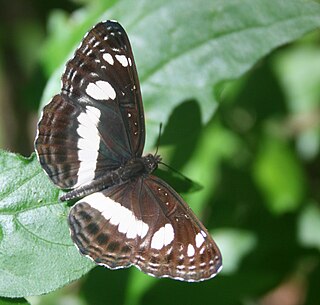
Neptis saclava, the spotted sailer, is a butterfly of the family Nymphalidae. It is native to Madagascar and to large areas of sub-Saharan Africa.
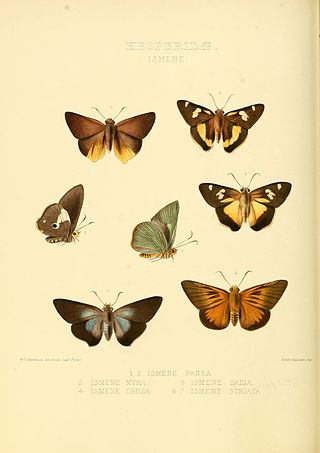
Coeliades ernesti is a butterfly in the family Hesperiidae. This species originates from Madagascar but was also introduced to Réunion and Mauritius (1980). Their habitat consists of forests, secondary forests and anthropogenic areas.
Coeliades rama is a butterfly in the family Hesperiidae. It is found in Madagascar. The habitat consists of forests, forest margins and anthropogenic environments.














